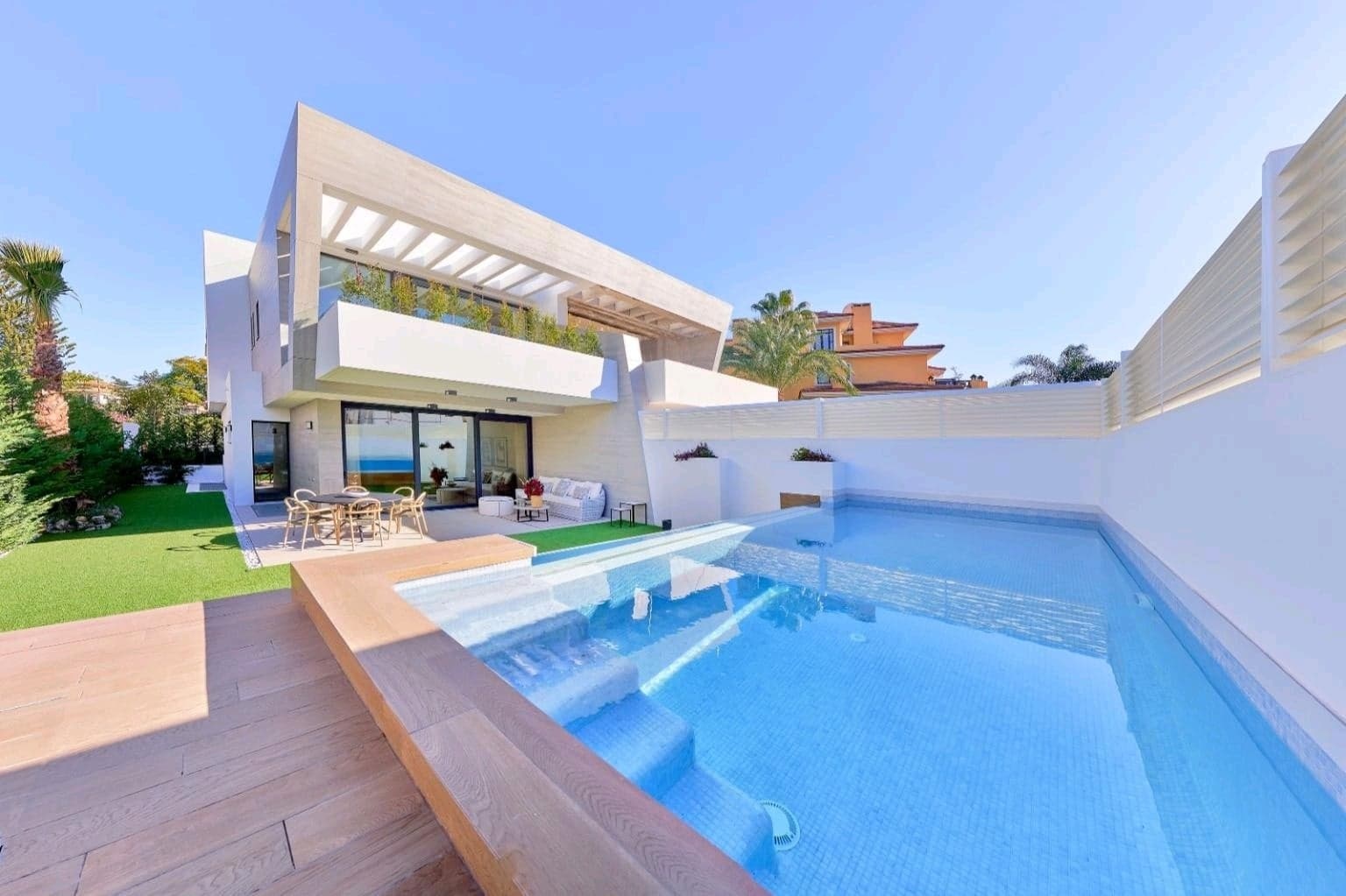Building a swimming pool in Spain
- Posted on
- 0

For a decade, when building a new swimming pool in Spain, the process of "GUNITAR", the spraying of the pool wall, has been considered normal in order to strive for greater durability of the structure so that no cracks of any kind can appear.
"There are steps that should always be the same, no matter what type of pool is being built".
1. Digging the hole
The first thing that would always be the same for any type of inground pool that we are going to build is to measure, mark or align the excavation of the hole required for the construction of the pool. Once the hole is made according to the shape of the pool and the desired depth, we proceed to the next step.
2. Construction of walls and floor
With a few levels, we mark out the shape, width and depth for making the separation walls and floor. The dividing walls of brick or concrete blocks are erected as desired and according to the dimensions. In this step, if the pool is not going to be made of concrete, we build a partition that is filled with concrete by hand.
3. Placement of the mesh
A double iron mesh is placed, which is fastened to the walls as well as to the ground. This is essential to hold the concrete in place later. It is important to take into account the thickness of the wall that we want for the placement of the iron mesh, which must be fixed to each other and also to the built-up partitions. It is important that there is no loose iron that could cause problems in the future.
4. Placement of swimming pool filtration elements
In all pools, depending on the filtration system to be installed, the pipes or wall outlets must be installed, as well as the necessary drains for recirculating the pool water. Outlet jets, drain, skimmer, inlet hoover and level regulator are elements that one will have to know how to place in the pool to have the inlets already installed. At this point one should also consider whether there will be lighting and other elements in the pool, such as air intakes with jacuzzi effect, counter-current swimming or pre-installation for the pool heating.
5. Spraying the pool external skin
This is the "Gunitado" technique, a typical construction system where concrete is projected with a "cannon" or high-pressure hose. The entire surface of the walls and floor is filled with a pressurised hose. In this way we get a wall that is more resistant to the pressure exerted by the ground or a slope. This is a process that many pool builders, especially in the south of Spain, rely on for the construction and renovation of pools.
6. Waterproofing the extarnal skin
It is advisable to waterproof the pool before completion in order to avoid any problems in the future. There are many types of waterproofing for this type of construction and surface, but the most common in Spain is of the SIKA 107 SEAL brand. This is a brand and product that offers quality and guarantees and is ideal to be used in a preventive way in this step to avoid leakage problems in the long run.
7. Finishing the edge of the pool
Different finishes can be used for the pool copings. It all depends on the design of the pool and its surroundings, taste, etc. It is common to use a coping stone because it is practical, durable and more economical than other materials. Today, there are many options and materials for building the edge of the pool.
8. Inside finishing of the pool
Currently there are some finishes most used by Spaniards in the past, such as: the finish with chlor-rubber a special paint, more economical method but becoming less popular. Previously known among European second home owners is the tiling in tile or more commonly in vitreous coating "gresite", where now there is greater competition in manufacturers, models and colours are available since earlier. Finishing with special joint cement for swimming pools where there are also different colours. You can also choose the indoor finish by installing a PVC liner that has different prints as design.
9. Filtration and disinfection equipment
For the purification and treatment of the water, a filtration and disinfection system will be installed. Depending on the amount of water in the pool, we will have to determine the size of the filtration equipment: suction pump, sand filter, salt electrolysis or dosing for disinfection with chemicals. These are the most important filter elements that all swimming pools must have.
More information on swimming pools in Spain can be found in other of our blog articles. For other types of information, please contact an expert swimming pool service company in Spain such as Cristal Blue.


Comments
Be the first to comment...